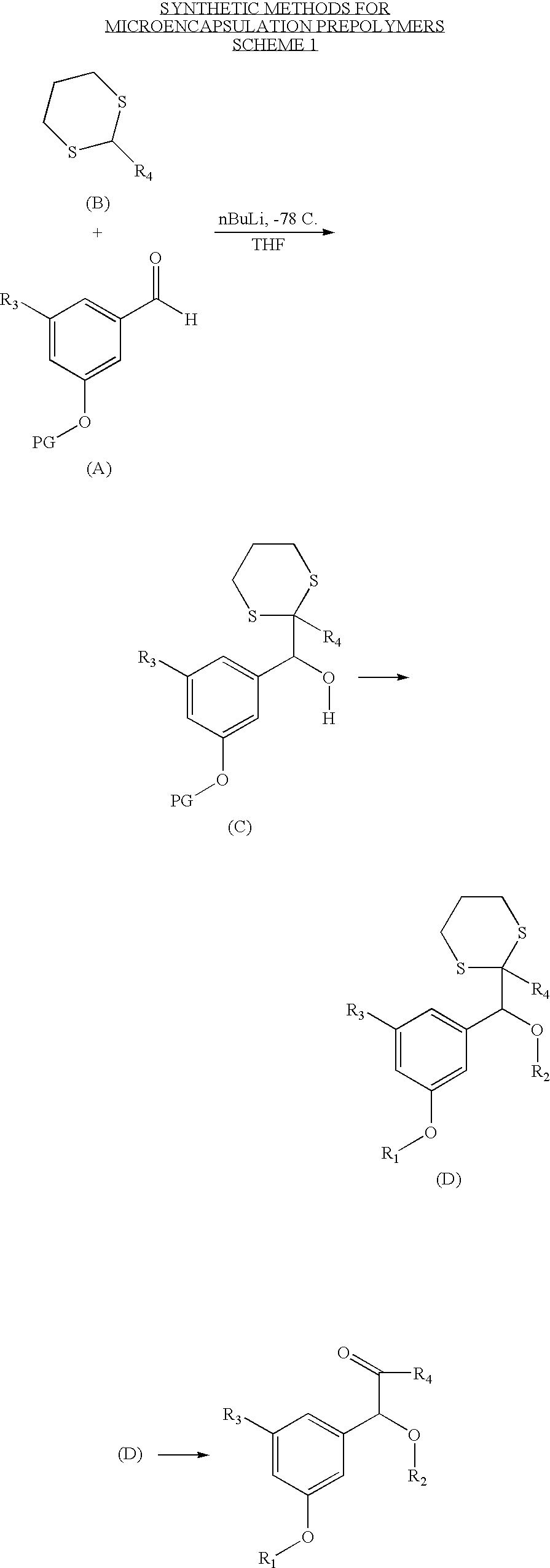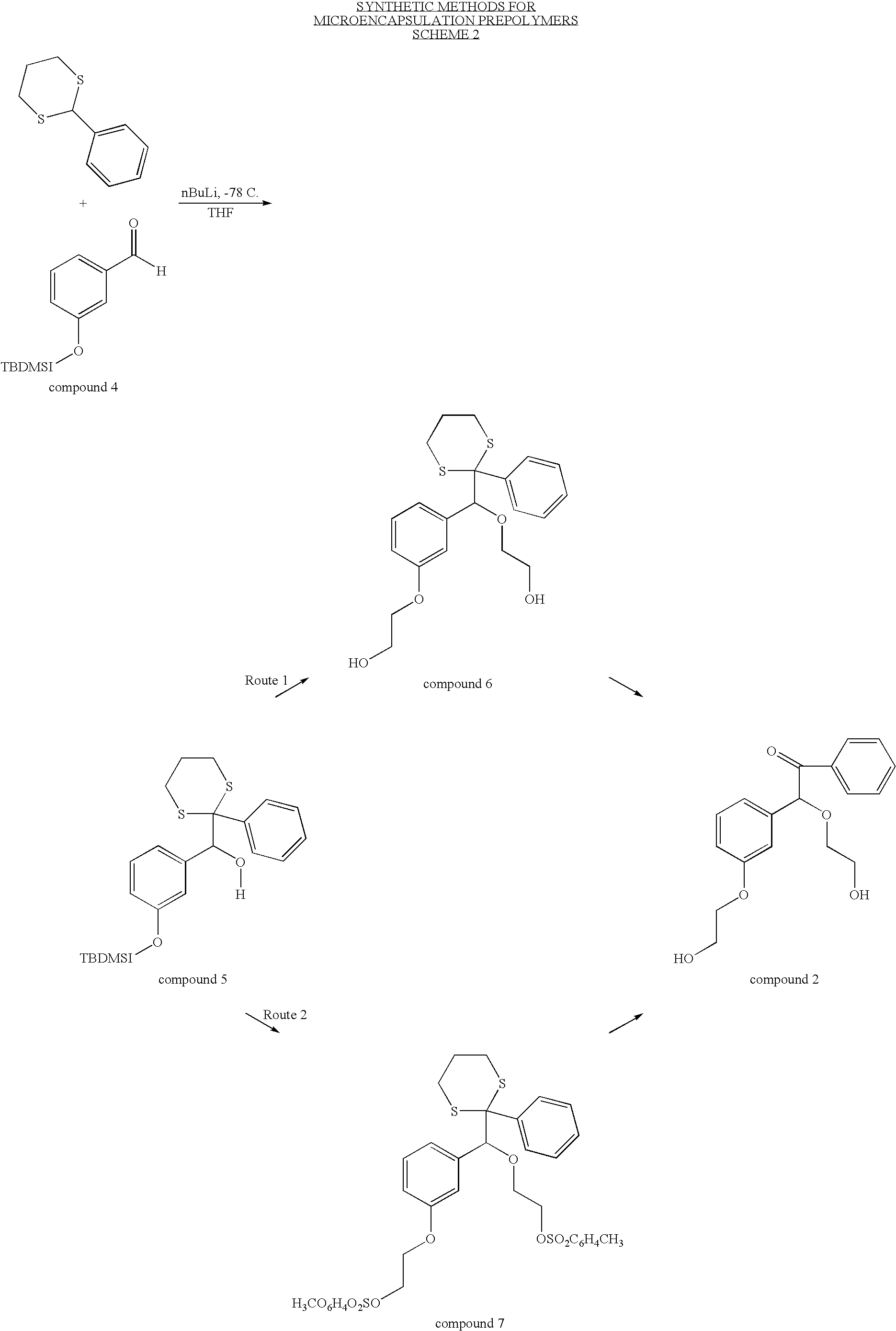Photo-Responsive Microencapsulation Materials, Compositions and Methods of Use Thereof
a technology of microencapsulation and photoresponsive materials, applied in the field of microencapsulation, can solve the problems of inappropriate or advantageous release properties of microencapsulated materials, and achieve the effect of convenient control and availability
- Summary
- Abstract
- Description
- Claims
- Application Information
AI Technical Summary
Benefits of technology
Problems solved by technology
Method used
Image
Examples
example 1
Microencapsulation of Cyclohexyl Ethyl Acetate with 1% Photoactivatable Prepolymer (Compound 2)
[0106]An aqueous solution was prepared, comprising 0.3% Tergitol (a surfactant) and 5% NaOH. In a separate vessel, 100 g of cyclohexyl ethyl acetate (a common fragrance), 50 g of Bisphenol-A liquid epoxy resin (Dupont), and 1 g of photoactivatable prepolymer (Compound 2) were mixed. The fragrance / prepolymer solution was added to the aqueous solution and an emulsion formed by means of a high shear stirrer, the organic solution forming a dispersed phase with droplets ranging in size from 5 to 20 microns in diameter as determined by electron microscopy. Mild agitation was maintained as the temperature was raised to 50 degrees Celsius for three hours. The resulting suspension was then allowed to cool to room temperature and the pH adjusted to 7. Observation of the suspension under both a laboratory microscope and an electron microscope revealed discrete, roughly spherical, fully enclosed micro...
example 2
Microencapsulation of Andrane with 1% Photoactivatable Prepolymer (Compound 2)
[0107]An aqueous solution was prepared, comprising 0.7% Brij-35 (a surfactant) and 5% NaOH. In a separate vessel, 100 g of Andrane (a common fragrance), 50 g of Bisphenol-A liquid epoxy resin (Dupont), and 1 g of photoactivatable prepolymer 2 were mixed. The fragrance / prepolymer solution was added to the aqueous solution and an emulsion formed by means of a high shear stirrer, the organic solution forming the dispersed phase with droplets ranging in size from 5 to 20 microns in diameter as determined by electron microscopy. Mild agitation was maintained as the temperature was raised to 50 degrees Celsius for three hours. The resulting suspension was then allowed to cool to room temperature and the pH adjusted to 7, and the microcapsules recovered.
PUM
| Property | Measurement | Unit |
|---|---|---|
| diameter | aaaaa | aaaaa |
| diameter | aaaaa | aaaaa |
| size | aaaaa | aaaaa |
Abstract
Description
Claims
Application Information
 Login to View More
Login to View More - R&D
- Intellectual Property
- Life Sciences
- Materials
- Tech Scout
- Unparalleled Data Quality
- Higher Quality Content
- 60% Fewer Hallucinations
Browse by: Latest US Patents, China's latest patents, Technical Efficacy Thesaurus, Application Domain, Technology Topic, Popular Technical Reports.
© 2025 PatSnap. All rights reserved.Legal|Privacy policy|Modern Slavery Act Transparency Statement|Sitemap|About US| Contact US: help@patsnap.com



